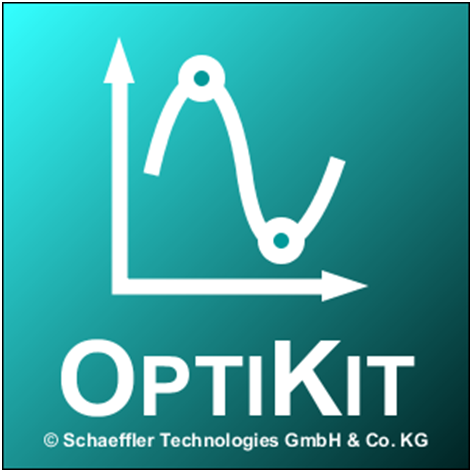further projects in optimization
Further Projects in Optimization
|
EFI Synthetic Biology (2014-2016) The project combines the disciplines of Biology, Chemistry, Informatics, Mathematics, Physics and Engineering in interdisciplinary research teams to develop novel metabolic pathways in living and non-living systems. Classical examples of synthetic Biology are the development of tailor-made minimal cells, the design of novel metabolic pathways, the construction of complex genetic switches and the creation of orthogonal bio-systems. Anticipated applications of these developments are novel strategies for disease prevention, therapy and diagnostic, but also for the development of new sources for bioenergy, new approaches in environmental protection and the production of fine chemicals. Objectives of the project “Synthetic Biology” are bundling the individual expertise in the above mentioned disciplines at the FAU and to foster projects on developing novel metabolic pathways in living systems as well as the design of tailor-made minimal cells and nano-factories. |
|
Optimization Methods in CAE-Tools (2012-2015) This project is concerned with the specialized question of developing optimization methods for the area of engine construction and providing them as integrated tool within a CAE application in a way that the users can formulate and solve the predominant part of their optimization problems on their own. Details In industrial companies a product development without the support of software is not imaginable any more. Besides of the efficient creation and calculation of complex models, the fully automated optimization of parameters of a product has come to the foreground more and more. That includes e.g. the maximization of life times or the minimization of friction. On the commercial market various all-purpose optimization tools are available. But due to their desired all-round applicability for arbitrary optimization problems, those products are often very complex in handling only after an extensive time of practice they are usable efficiently. Special requirements of concrete tasks also can only be considered insufficiently. In the context of this project a specialized optimization tool “OptiKit” is developed, that can be included seamlessly to the CAE applications of the customer based on a framework. By that way it is available to the user directly as part of the development application. Hereby it enables an extensive modeling of the optimization problem within the familiar graphical user interface. As part of this modeling, parameters and the objective function for the optimization can be extracted directly from the CAE model. Boundary conditions can be added to the model-intrinsic conditions freely by the user. The optimization tool is at the same time flexible enough to cope with floating point number problems as well as with purely integer or mixed integer problems. With that it is able to treat the optimization problems that arise in the field of the product development in engine construction. An integrated robustness evaluation during the optimization can be activated, in order to secure against e.g. manufacturing tolerances or fluctuating environmental conditions. For more flexibility the user has access to several different optimization methods with varying strengths and focuses. Depending on the concrete type of problem besides of evolutionary algorithms also numerical direction search methods or DoE based methods can come into operation. Moreover specialized optimization methods are being developed and implemented that are tailored to the requirements of the relevant optimization problems and can solve them efficiently. Industrial cooperation partner: Schaeffler Technologies GmbH & Co. KG |
| Prof. Günter Leugering, Dipl.-Technomath. Tobias Nuißl |
|
Simulationsbasierte Optimierung Optimization Methods in CAE-Tools (2012-2015) This project is concerned with the specialized question of developing optimization methods for the area of engine construction and providing them as integrated tool within a CAE application in a way that the users can formulate and solve the predominant part of their optimization problems on their own. In industrial companies a product development without the support of software is not imaginable any more. Besides of the efficient creation and calculation of complex models, the fully automated optimization of parameters of a product has come to the foreground more and more. That includes e.g. the maximization of life times or the minimization of friction. On the commercial market various all-purpose optimization tools are available. But due to their desired all-round applicability for arbitrary optimization problems, those products are often very complex in handling only after an extensive time of practice they are usable efficiently. Special requirements of concrete tasks also can only be considered insufficiently. In the context of this project a specialized optimization tool “OptiKit” is developed, that can be included seamlessly to the CAE applications of the customer based on a framework. By that way it is available to the user directly as part of the development application. Hereby it enables an extensive modeling of the optimization problem within the familiar graphical user interface. As part of this modeling, parameters and the objective function for the optimization can be extracted directly from the CAE model. Boundary conditions can be added to the model-intrinsic conditions freely by the user. The optimization tool is at the same time flexible enough to cope with floating point number problems as well as with purely integer or mixed integer problems. With that it is able to treat the optimization problems that arise in the field of the product development in engine construction. An integrated robustness evaluation during the optimization can be activated, in order to secure against e.g. manufacturing tolerances or fluctuating environmental conditions. For more flexibility the user has access to several different optimization methods with varying strengths and focuses. Depending on the concrete type of problem besides of evolutionary algorithms also numerical direction search methods or DoE based methods can come into operation. Moreover specialized optimization methods are being developed and implemented that are tailored to the requirements of the relevant optimization problems and can solve them efficiently. Industrial cooperation partner: Schaeffler Technologies GmbH & Co. KG |
| Dr. Alexander Thekale (Erlangen), Dipl.Math. Markus Kaiser (Wuppertal), Prof. Dr. Kathrin Klamroth (Wuppertal), Philippe Toint (Namur,Belgien) |
|
Optimization of Gliding Flights In this project, we have developped a new algorithm for the gliding flights internet platform OnLineContest that automatically and optimally selects GPS points that the weighted linear polygonal line through the selected points has maximal length. Nowadays, gliding planes are equipped with GPS recorders that determine the position of the plane every few seconds. With this data, a typical flight path is determined by several tousands of data points. For flights within the OLC-classic competition, five to seven data points have to be selectes from the data set such that the weighted linear polygonal line through the selected points has maximal length. In this project, we have developped a new algorithm for the gliding flights internet platform OnLineContest that automatically and optimally selects these points from the data set. Besides the guarantee of a choice of optimal points, a reduction in the runtime during the optimization of ca. 90% was achieved. This drastically reduced the waiting time of the pilots until they receive their result. This Algorithm is now used at OnLineContest, further competitions are currently optimized. |
| Dr. Alexander Thekale (Erlangen), Prof. Dr. Kathrin Klamroth (Wuppertal), Martin Petz (OnLineContest) |
|
Optimizing the number of multigrid cycles in the full multigrid algorithm In this project, a new branch and bound type algorithm was developed to optimize the number of V-cycles within full multigrid algorithms. Multigrid methods are among the most efficient and widespread methods for solving large linear systems of equations that arise, for example, from the discretization of ordinary or partial differential equations. In this project, a new branch and bound type algorithm was developed to optimize the number of V-cycles within full multigrid algorithms. The usage of this new algorithm within full multigrid lead to a significant reduction of computational cost. |
| Dr. Alexander Thekale (Erlangen), Tobias Gradl (Erlangen), Prof. Dr. Kathrin Klamroth (Wuppertal), Prof. Dr. Ulrich Rüde (Erlangen) |




